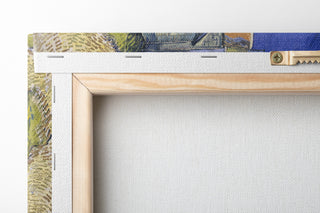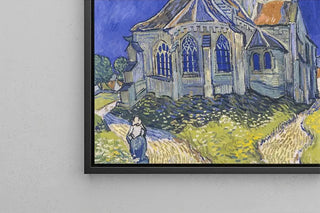Art print of Metropolitan works at the corner of Faubourg Saint-Antoine Street and Reuilly Street - Germain David-Nillet | Art print


View from behind

Frame (optional)
Urban works and Parisian atmosphere: the vision of Germain David-Nillet
The lively scene of Travaux du métropolitain à l'angle de la rue du faubourg Saint-Antoine et de la rue de Reuilly captures the density of a Parisian construction site with great pictorial finesse. Ochre and gray tones blend with touches of blue and rust that reproduce the dust, steam, and indirect light of the surrounding facades. The composition arranges figures, tools, and metal structures in successive planes, creating depth and rhythm while maintaining documentary precision. This art print of Travaux du métropolitain à l'angle de la rue du faubourg Saint-Antoine et de la rue de Reuilly conveys the sound and visual atmosphere of the scene.
Germain David-Nillet, master of realism and urban scene
Germain David-Nillet, a painter at the turn of the 19th century, distinguished himself by his attention to everyday motifs and urban transformations. Influenced by realism and the naturalist school, he documented the modernization of Paris with a sense of detail and social sensitivity. His famous works show workers, construction sites, and changing streets, making him a privileged witness of urban industrialization. The painting Travaux du métropolitain à l'angle de la rue du faubourg Saint-Antoine et de la rue de Reuilly illustrates his talent for combining documentary rigor and pictorial composition, confirming his contribution to the history of urban painting.
A decorative acquisition with multiple assets
This art print is ideal for dressing a living room, an office, or an entrance that demands character and history. Faithful to the original shades, the canvas Travaux du métropolitain à l'angle de la rue du faubourg Saint-Antoine et de la rue de Reuilly offers a refined texture and colorimetric rendering, perfect for a framed or stretcher display. The painting brings a warm and narrative presence, stimulating conversation and interest in urban heritage. Choosing this canvas means selecting a decorative piece that is both aesthetic and well-documented, designed to last.

Matte finish

View from behind

Frame (optional)
Urban works and Parisian atmosphere: the vision of Germain David-Nillet
The lively scene of Travaux du métropolitain à l'angle de la rue du faubourg Saint-Antoine et de la rue de Reuilly captures the density of a Parisian construction site with great pictorial finesse. Ochre and gray tones blend with touches of blue and rust that reproduce the dust, steam, and indirect light of the surrounding facades. The composition arranges figures, tools, and metal structures in successive planes, creating depth and rhythm while maintaining documentary precision. This art print of Travaux du métropolitain à l'angle de la rue du faubourg Saint-Antoine et de la rue de Reuilly conveys the sound and visual atmosphere of the scene.
Germain David-Nillet, master of realism and urban scene
Germain David-Nillet, a painter at the turn of the 19th century, distinguished himself by his attention to everyday motifs and urban transformations. Influenced by realism and the naturalist school, he documented the modernization of Paris with a sense of detail and social sensitivity. His famous works show workers, construction sites, and changing streets, making him a privileged witness of urban industrialization. The painting Travaux du métropolitain à l'angle de la rue du faubourg Saint-Antoine et de la rue de Reuilly illustrates his talent for combining documentary rigor and pictorial composition, confirming his contribution to the history of urban painting.
A decorative acquisition with multiple assets
This art print is ideal for dressing a living room, an office, or an entrance that demands character and history. Faithful to the original shades, the canvas Travaux du métropolitain à l'angle de la rue du faubourg Saint-Antoine et de la rue de Reuilly offers a refined texture and colorimetric rendering, perfect for a framed or stretcher display. The painting brings a warm and narrative presence, stimulating conversation and interest in urban heritage. Choosing this canvas means selecting a decorative piece that is both aesthetic and well-documented, designed to last.






